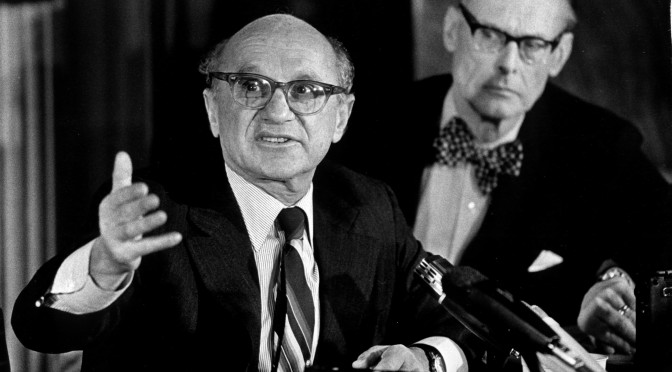Milton Friedman was a monetarist and developed most of the monetarist theory used today. He was a great believer in the power of the free market and much of his work was based around this. Friedman was a professor of economics at Chicago University and produced much of his best-known work during his tenure.
Friedman is known for coming up with two major contributions to the economic policy debate. The first being the Quantity Theory of Money, stated that (M) the amount of money in circulation multiplied by (V) the velocity of circulation of that money is equal to (P) the average price level multiplied by (T) the number of transactions taking place (MV = PT). If the money supply grew faster than the underlying growth rate of output this would lead to inflation. It was in this work that he developed his best known thesis.
His second main contribution was the Expectations-augmented Phillips Curve. The Phillips Curve showed a trade-off between unemployment and inflation. In the 1970s there was a problem with the Phillips Curve,it could not explain unemployment and inflation going up together. Friedman came up with the solution of stagflation occurring, to include the role of expectations in the Phillips Curve, thus giving it the name ‘expectations-augmented’ Phillips Curve.
Milton Friedman will always be associated with monetarism. Monetarism can be defined as the belief that the money supply, or the total amount money in circulation in a given country’s economy at a given time, is the most important economic measure. At the age of 68 received a Nobel in 1976 for his work in monetarism. His work remains highly influential and is still highly controversial.
